Best Activities in Istanbul
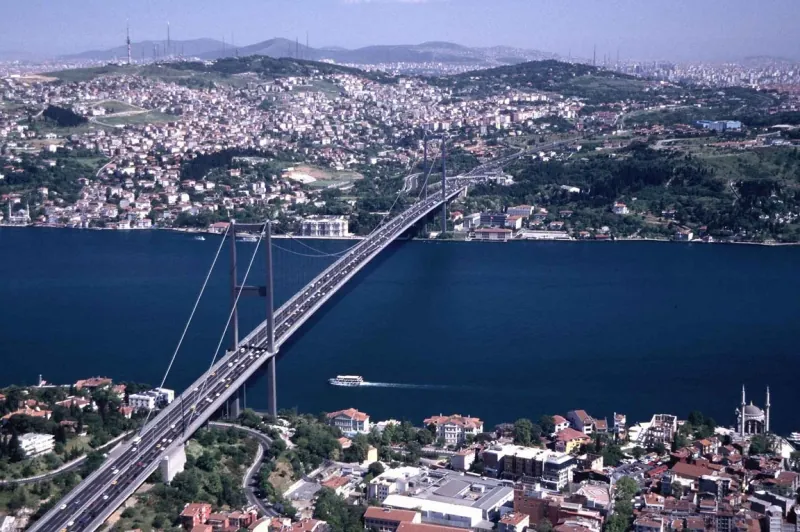
Bosphorus
Istanbul has settlements in both Europe and Asia. It is the only city in the world that is inhabited on both continents. Its current population is more than 16 million. It has a great potential for visitors to Istanbul.
There are many activities to be done and to be done in one of the most beautiful cities in the world like Istanbul. Istanbul is a city worth seeing with its history, culture, daily life and nightlife. There are many great activities that will make you happy in this beautiful city.
You can do the activities in Istanbul you will see below.
- Istanbul Daily City Tours
- Bosphorus Tours
- Bosphorus Dinner Cruise
- Hop-On Hop-off Bus Tour
- Prince Islands Tour
- Day Tours Outside Istanbul
- Istanbul Palaces
- Istanbul Museums
- Istanbul Theaters
- Istanbul Concerts
- Istanbul Expo Centers
- Istanbul Exhibition Halls
- Beautiful Istanbul Mosques
- Sema Mevlevi Whirling Dervish Show
- Turkish Night Show
- Istanbul Theme Parks
- Istanbul Aquariums
- Istanbul Zoos
- Istanbul Historical Bazaar
- Turkish Historical Baths
- Istanbul Historical Walls
- Istanbul Historical Fortresses
- Istanbul World Celebrities Football Match
- Istanbul Shopping Malls
The post Best Activities in Istanbul appeared first on Turkey Travel Info.
Fantastic Cappadocia Balloon
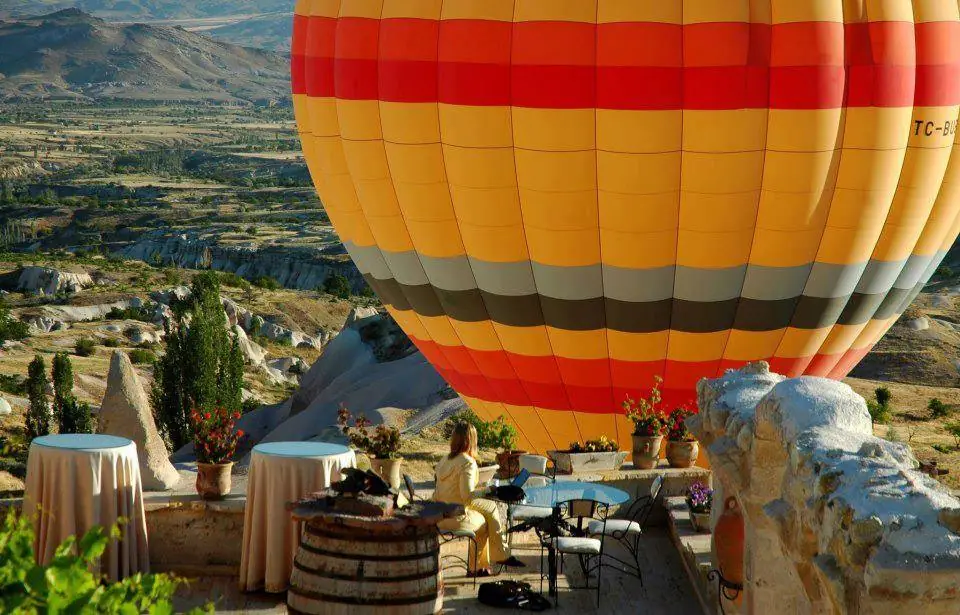
Fantastic Cappadocia Balloon
Cappadocia is one of the most beautiful places in the world. Thousands of tourists from all over the world come to Cappadocia every year. Cappadocia has incredible beauties that emerged with its geological soil structure that was formed millions of years ago. In this region, there are fairy chimneys, canyons, and valleys that made as a result of the lava spewed by the volcanic mountains. The earth cover consisting of soft layers was easily carved by the local people living here, and they built houses for protection from external factors. It has been a very important center in every period of history. The first Christians lived here for a long time by hiding from the Romans and tried to spread Christian. The frescoes and paintings they made in underground cities, rocks and caves have survived until today. Who come to visit Cappadocia, they are amazing these paintings and frescoes. Cappadocia is a fantastic place with its natural beauty.
Fantastic Cappadocia Hot Air Balloon Tour
The fantastic hot air balloon tours is the most important activity of Cappadocia in recent years, also offer a different beauty. It is also very enjoyable to see the magnificent beauty of Cappadocia from the air. Hot air balloon tours are organize early in the morning. Watching the sunrise with a hot air balloon makes the fantastic beauties of Cappadocia magical.
Hot air balloons in Cappadocia do only in the early morning. If the weather conditions are not suitable in the morning, flights can be made in the afternoon same day. You need to make a reservation in advance for to join a balloon tour. The sooner you book, the cheaper you can get your ticket. Cappadocia Hot air balloon flights can be made every month in summer, winter and spring in all seasons. If we think that it is very hot in summer and very cold in winter, it will be more comfortable to fly in spring. Balloon flight times are also variable as the sunrise is different every day. For example, flights are made around 5.00am at the summer season and 6.30am at the winter season.
One hour before the flight, the balloon company takes you from the hotel where you stay with the minibus and brings you to the meeting point. While you wait for the balloon to be ready for flight, you can have a light breakfast with drinks such as hot tea and coffee and small cake-type foods. When the balloon is ready for flight, your pilot gives brief information about the flight. And with the first light of the morning, your fantastic Cappadocia hot air balloon flight begins. You watch the magnificent Cappadocia and sunrise for an hour in the sky. When your hot air balloon tour is over, you will be mesmerized by this beauty. The champagne ceremony and a balloon medal are awarded as an unforgettable memory for you. You will be dropped off at your hotel with the service vehicle of the balloon company. You do an activity that lasts for approximately 3 hours. Considering that the weather will be cooler in the early hours of the morning, we recommend that you buy additional clothing according to the season. The shoes you wear must be sporty for your comfort. It is very important.
The post Fantastic Cappadocia Balloon appeared first on Turkey Travel Info.
Beaches in Istanbul
Istanbul is a big city surrounded by seas on all sides. There are many beautiful beaches for those who live in this city and those who come to visit. There are beaches on the shores of the Black Sea and Marmara Sea. Kilyos and Şile are the most popular beaches on the Black Sea coast and Florya Marmara Sea coast.
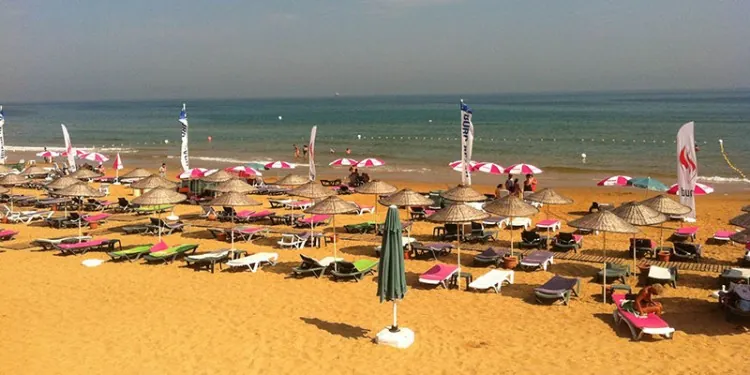
Kilyos
Kilyos Beaches
Kilyos is a small fishing village in Sarıyer, on the Black Sea coast of Istanbul’s European side. Kilyos, which became touristic over time, is now an ideal place for those who go swimming for the summer season. It has the most beautiful beaches of Istanbul. It gets very crowded during the summer season and especially on weekends. There are also woodland places where you can have a picnic and barbecue, not only for swimming.
Kilyos is a place with many accommodation and restaurant alternatives.
It is located in neighboring villages close to Kilyos. These villages, Kısırkaya, Uskumruköy, Gümüşdere and Demirciköy are ideal places for swimming and picnics.
Kilyos and other villages, with forest on one side and the sea on the other, are among the most beautiful holiday destinations of Istanbul with these features. You can do many activities in many beach clubs in Kilyos. Examples include activities such as kite board, catamaran, windsurfing, beach volleyball and sand soccer.
Kilyos is 29 km from Taksim Square and 34 km from Sultanahmet Square.
How To Get To Kilyos
Kilyos, located within the borders of Sarıyer district, can be reached in many different ways.
If you want to go by public city bus:
25T and 40 Sarıyer- Taksim
25B Sariyer- Besiktas
25E Sariyer- Kabatas
25H Sariyer- Haciosman
41 Sarıyer – 4. Levent
59RS Rumelihisarüstü-Sarıyer
If you want to go by metro:
Taksim – Hacıosman metro and 25H Sarıyer – Hacıosman buses.
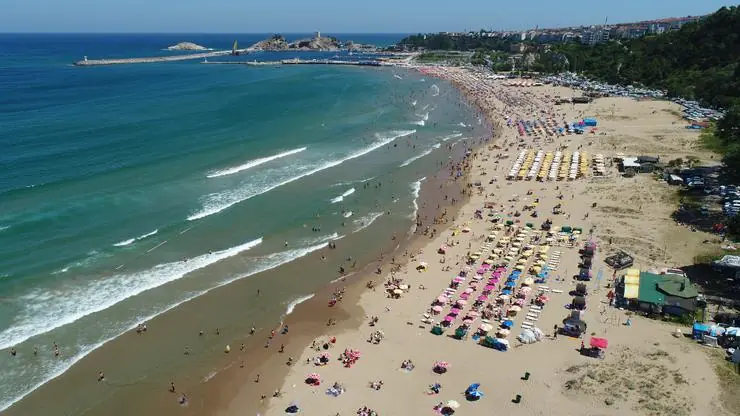
Şile
Şile Beaches
Şile is located on the Anatolian side of Istanbul, on the Black Sea coast. It has been known as a fishing village since ancient times. Today, with its long sandy beaches, it is an ideal place for summer holidays and for daily swimming.
It is an ideal place for those who want to have a picnic and barbecue due to its very large forest area. There are many villages on the road to Şile. One of them is Ömerli village. The water requirement of the Asian side of Istanbul comes from the Ömerli village dam. You can buy organic vegetables and fruits from these villages.
Şile is 70 km from Üsküdar Square.
How To Get To Şile
You go to Üsküdar from Beşiktaş and Eminönü by ferry. You can take the Şile-Ağva buses that regularly depart from Üsküdar.
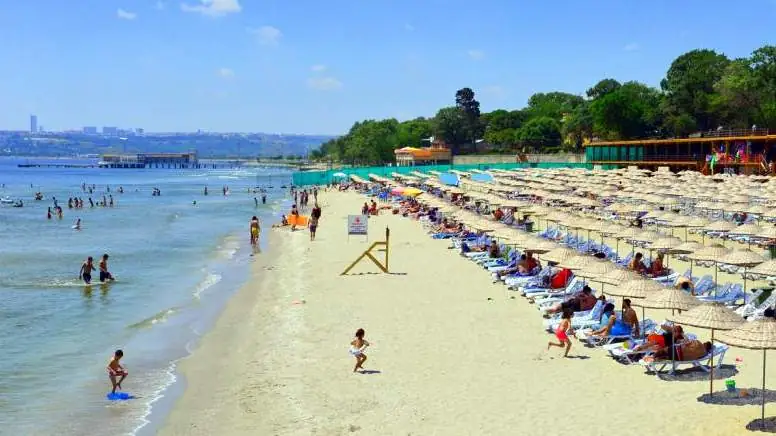
Menekşe
Florya Beaches
Florya Güneş beach and Menekşe beach, one of the oldest beaches of Istanbul, are on the Marmara Sea coast.
As it is very crowded on weekends, we recommend you to go there during the week. It has shorter beaches than the Black Sea coast.
Florya is 21 km from Taksim Square and 19 km from Sultanahmet Square.
How to go to Florya
73F Taksim- Florya
BN1 Eminönü- Halkalı
BN2 Eminonu – Kucukcekmece
There is also transportation from Marmaray Florya station.
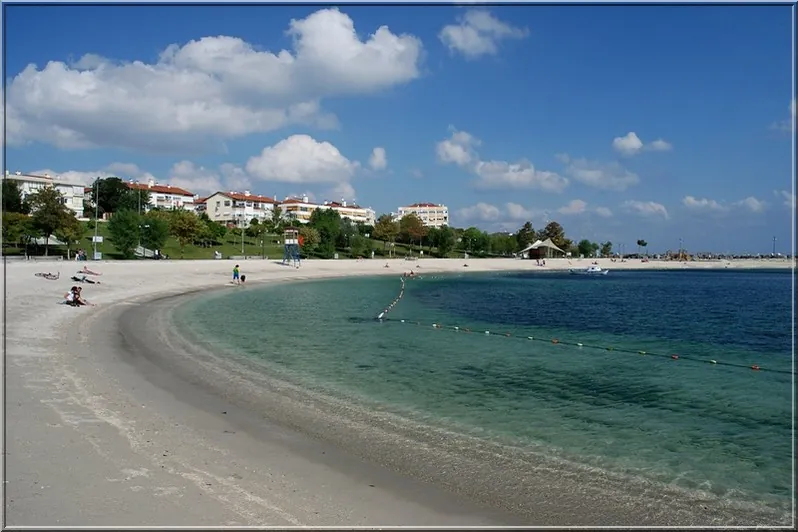
Yeşilköy
Yesilkoy Çiroz Beach
It is on the shore of the Marmara sea, which has a short sandy beach. We recommend that you go for the week. It gets very crowded on weekends.
Yeşilköy is 20 km from Taksim Square and 18 km from Sultanahmet Square.
How To Get To Yeşilköy
72T Taksim – Yesilkoy
81 Eminonu – Yesilkoy
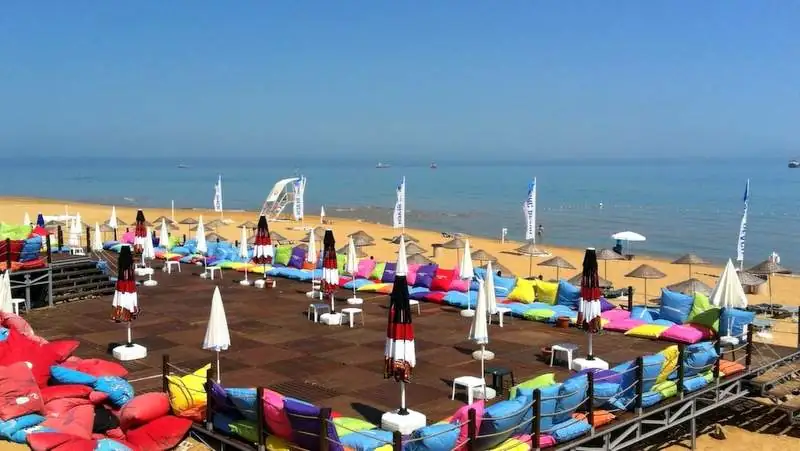
Princes Islands beaches
Princes’ Islands Beaches
There are beautiful beaches on the islands located in the middle of the Marmara sea. There are beautiful clean beaches in Büyükada, Heybeliada, Kınalıada and Burgazada. They are beautiful places for those who live in Istanbul and those who come to visit. It is crowded on weekends. We recommend you to go on weekdays, it is more enjoyable.
The Princes’ Islands is about 1 hour away from the center of Istanbul.
How To Get To Princes’ Islands
There are regular ferries departing from Eminönü and Kabataş.
The post Beaches in Istanbul appeared first on Turkey Travel Info.
Traditional Turkish Specialties
Traditional Turkish Culture is more than thousands of years old. It is unique in the world since it interacts from culture and civilizations starting from Central Asia to Europe and North Africa. Turkish culture reflects this unique cultural richness and diversity. Being the cradle of many civilizations for at least twelve thousand years, Anatolia is shaped by its deep roots in the Middle East and the Balkans. Anatolia is a bridge between eastern and western civilizations. Turkish culture also has a history of thousands of years between east and west. For travelers is a important place for visiting. It is also one of the best food and beverage places you can encounter.
We researched traditional Turkish specialties known as Turkish and famous with the Turkish name, which the Turkish culture has accumulated for thousands of years, offers the world. You will see them in the rest of the page.
Turkish Delight
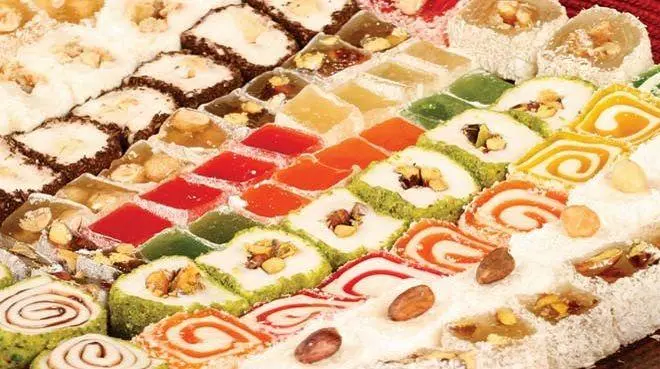
Turkish Delight
Delight history in Anatolia goes back to the 15th century. It lived its most popular times in the 17th century. Travelers took it to Europe and introduced it as ‘Turkish Delight’. Turkish delight has also gained popularity in other countries. Mass production started in 1777 during the Ottoman period. The first delights were produced by mixing with fruit extract and flour. Later, with the invention of starch and refined sugar, it has experienced taste changes until today. Turkish delight, which has many types today, has an important place in traditional Turkish specialties.
Turkish Coffee
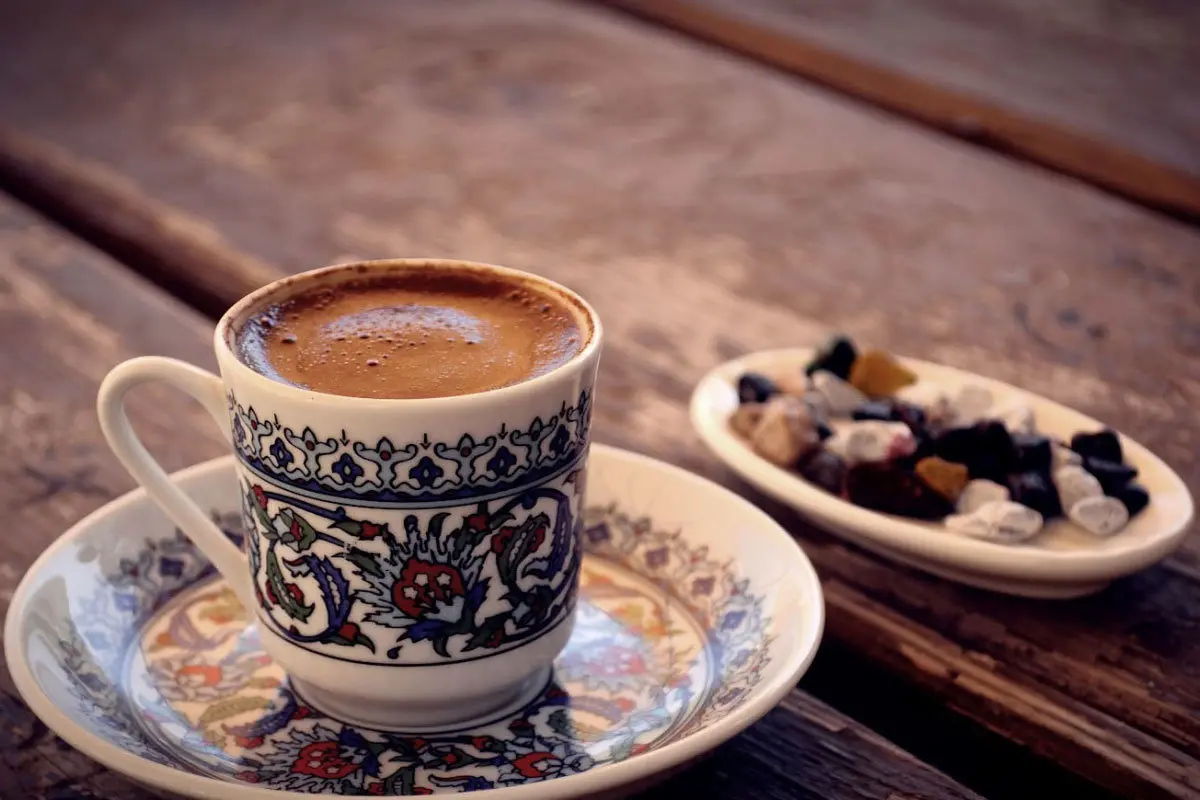
Turkish Coffee
Turkish Coffee is the name of the method of preparing and cooking coffee discovered by the Turks. It has a unique identity and tradition with its special taste, foam, smell, cooking and catering. The beverage, which was obtained by boiling the fruit of the coffee in the Arabian Peninsula, brought the coffee, which was admired by the Yemen Governor Özdemir Pasha, to Istanbul in 1517. With this brand new method of preparation and cooking by the Turks in Istanbul, it has gained real coffee flavor and unique aroma. Europe meets with coffee thanks to Turks; For many years, he prepared and consumed coffee as Turkish coffee with this method. In a short time, the taste and reputation of Turkish Coffee surrounded Europe and then the whole world, thanks to both merchants and travelers who traveled to Istanbul and Ottoman ambassadors. In Turkish culture, a coffee has 40 years of sake.
Turkish Tea
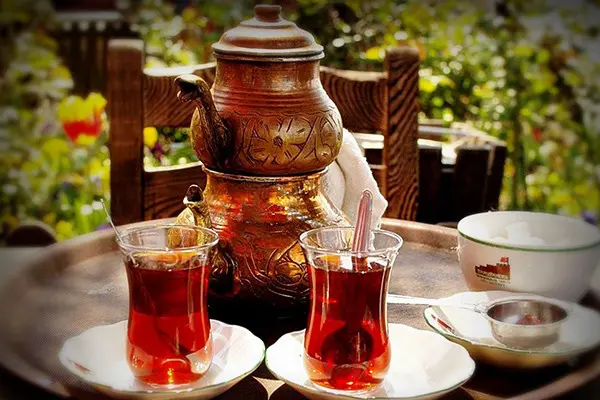
Turkish Tea
Drinking tea every meal of the day in Turkey and are consumed without any additional forms that can change the acidity of the food, especially into. Turkey, most tea consuming country in the world, 7 kg with an average annual per capita tea consumption. The Black Sea has an irrepressible flavor especially in the tea grown in Rize. Turkey is the most massive amounts of tea production in the world is among the first six countries. Turkish tea is a daily indispensable drink of Turkish culture. Turks always offer their guests tea.
Turkish Döner Kebab
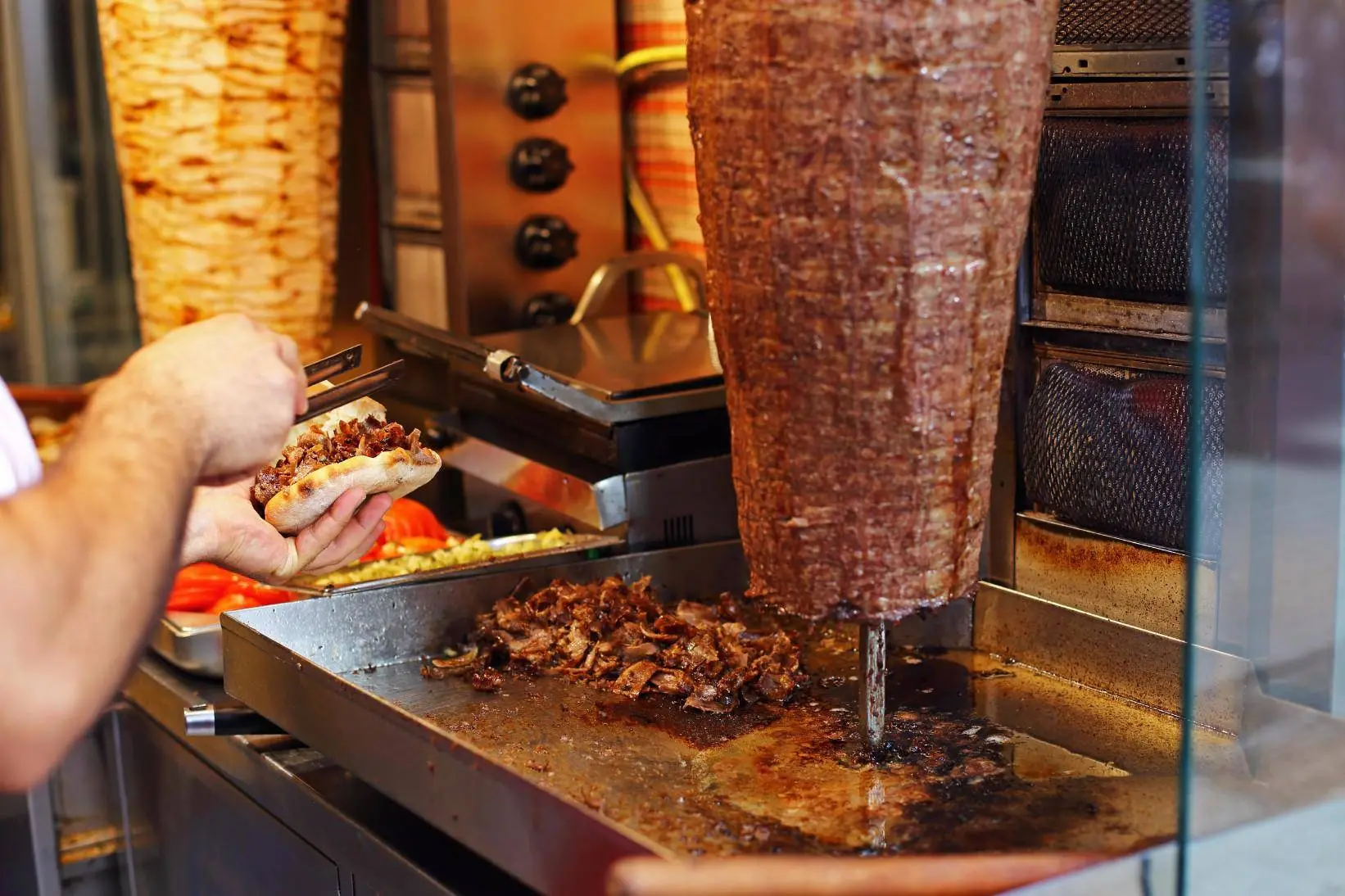
Turkish Döner Kebab
Döner has come to this day from the Turks by putting meat on his swords. The Ottoman period was mentioned in the 18th century before it took its current state of modernity. Lamb is used in a majority of the returns made in Turkey. In addition, chicken meat is often used. It is a very delicious food. As it is cooked very quickly, it is found all over the world as fast food. It is served in different ways. Wrap is served in bread, pita bread or lavash. Döner kebab with yogurt is known as Iskender kebab. You can find in every corner of Turkey. It is one of the most lively favorites of Turkish culture.
Turkish Baklava
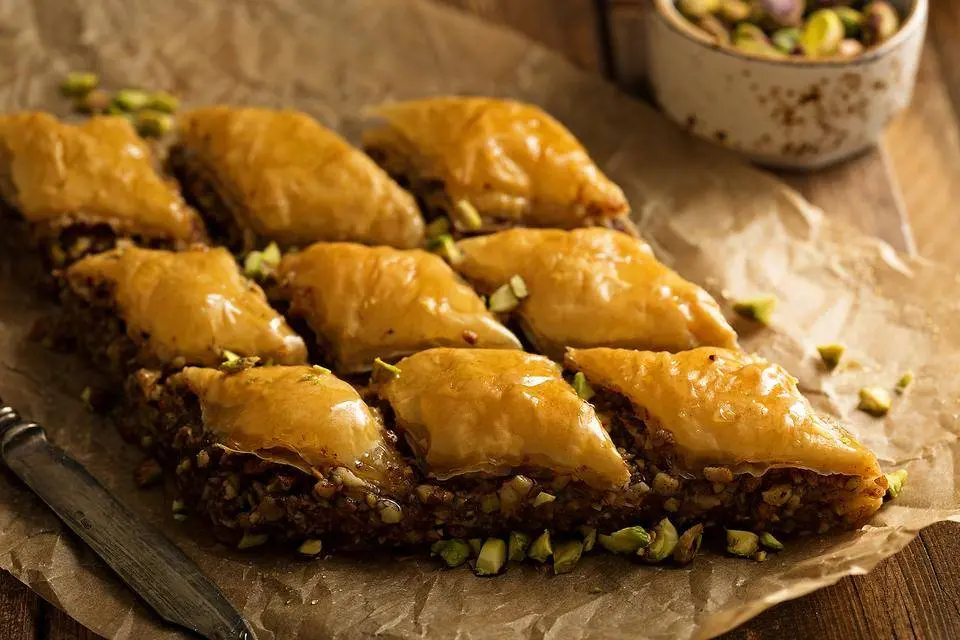
Turkish Baklava
The history of Turkish baklava extends from central Asia to Anatolia. Baklava is one of the most favorite desserts in the Ottoman palace. Today’s you can find anywhere in the world. Best baklava are made in Turkey’s Gaziantep province. It is preferred as pistachio or walnut. Baklava is one of the most lovely favorites of Turkish culture.
Turkish Shish Kebab
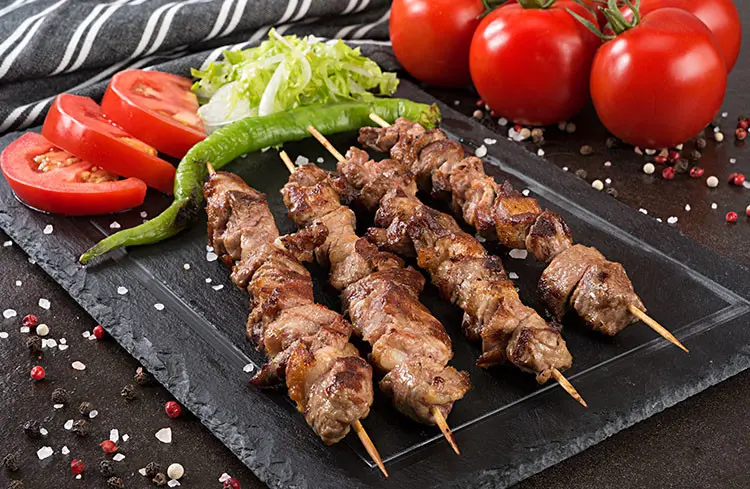
Turkish Shish Kebab
The meaning of shish kebab comes from the Turkish words which literally means “shish” and “roast meat” and this is a Turkish dish. Kebabs are a natural solution for nomadic tribes. Unusual meats were marinated not only to soften, but also to get rid of the flavor.
Turkish Lahmacun
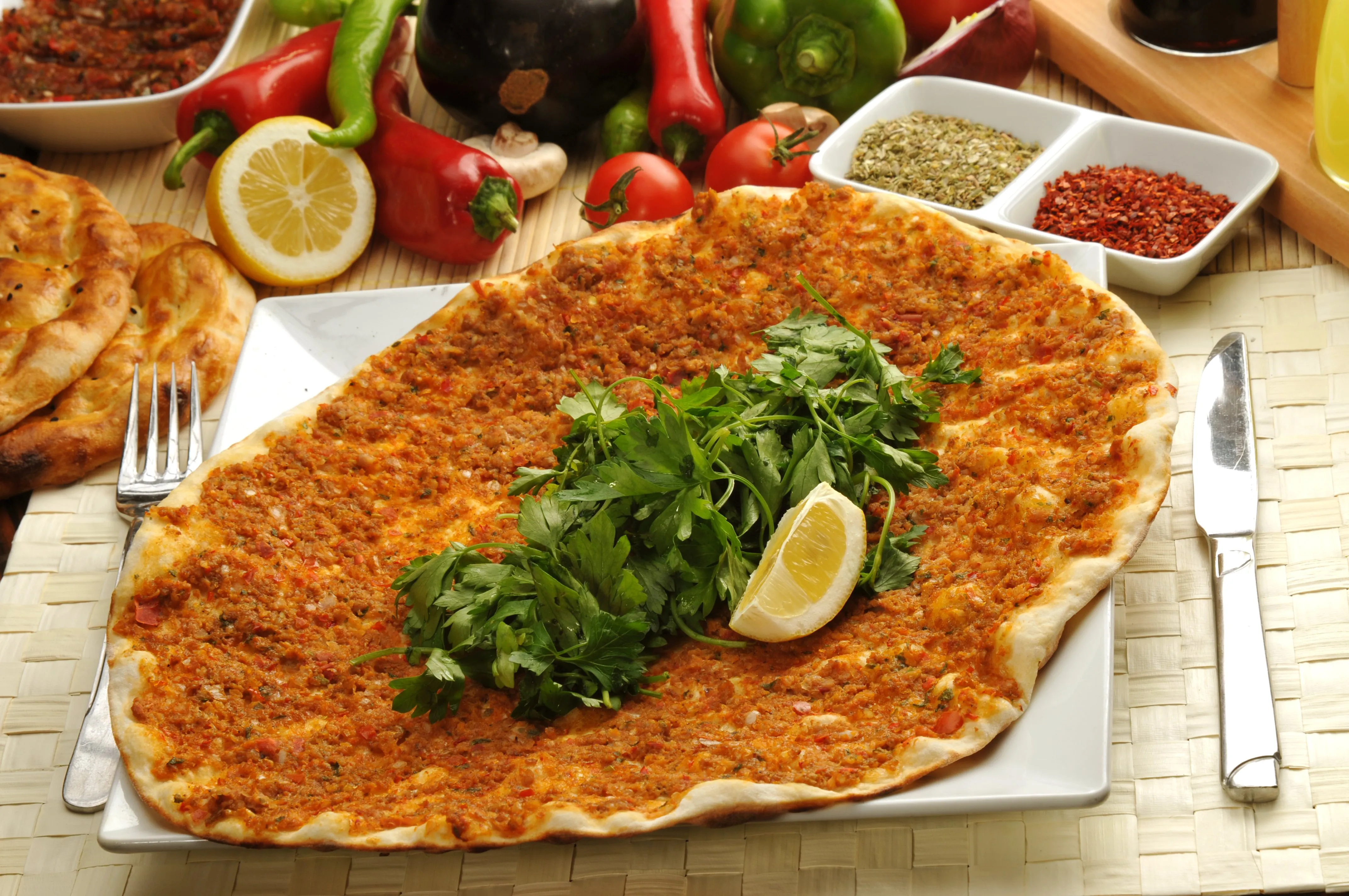
Turkish Lahmacun
Lahmacun is an oriental dish and has a history of approximately 5000 years. Lahmacun is called Turkish Pizza in some places. After the 1960s, it spread from the eastern regions of our country to the whole country and managed to attract great attention. The most delicious version of the Lahmacun is cooked in a stone oven, but in some places it is cooked in sheet metal. The lahmacun cooked in the stone oven can last for 2 days and during these 2 days it will never dry out. It is one of the best tastes of Turkish culture to the world.
Turkish Pita

Turkish Pita
Pita is a kind of bread with a wide variety of types. It is one of the indispensable flavors of Turkish cuisine. It is a kind of bread that does not swell much, has a flat appearance and is baked both on the sheet and in the tandoor. In Ramadan, special Ramadan pita is removed. Even with different pronunciations such as pitta, pita, pida, it is loved and consumed in a wide geography extending from Central Asia to Europe. It is known as Turkish pita all over the world.
Turkish Meatballs
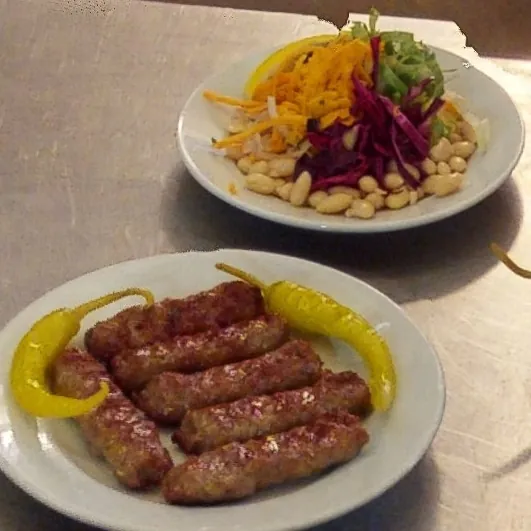
Köfte – Meatballs
Turkish Meatballs
Many inscriptions whose origins are considered as Central Asia refer to a food called ‘Kueffettue’ which means ‘kneaded meat’. On the journey of Turks from Central Asia to Europe, they taught the peoples with whom they had communication in the meatballs. Today, there are 250 different types of meatballs in Anatolia. You can find some of these delicious meatballs in Turkish restaurants in various parts of the world. One of the best examples of Turkish Meatballs is Sultanahmet Meatballs. We recommend.
Turkish Bagel
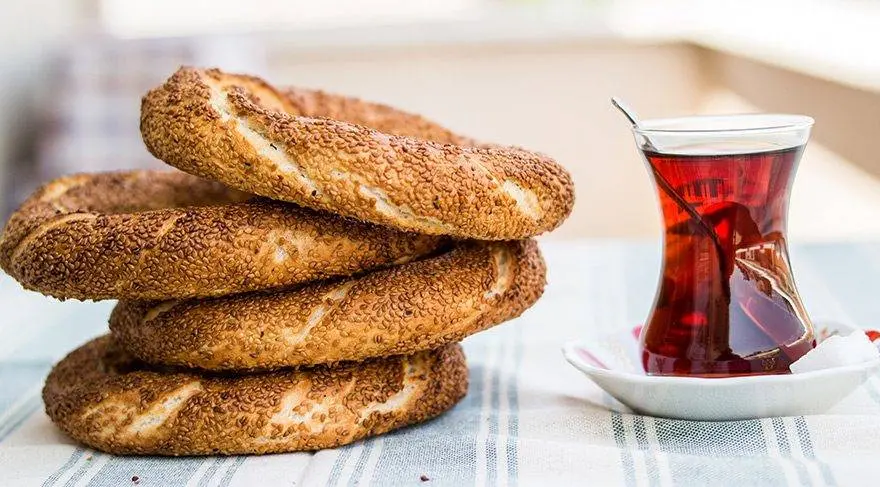
Turkish Bagel
Turkish bagel has a 600-year history. It is a traditional Turkish food. It is made of bagels, flour, yeast, molasses and sesame that you cannot see in other countries. Because it is satisfying and it is cheap, it is cooked in public ovens everywhere and street sellers are offered for sale in every corner of the cities. It is especially the choice of young people and students. We recommend it with Turkish Tea.
Turkish Yogurt
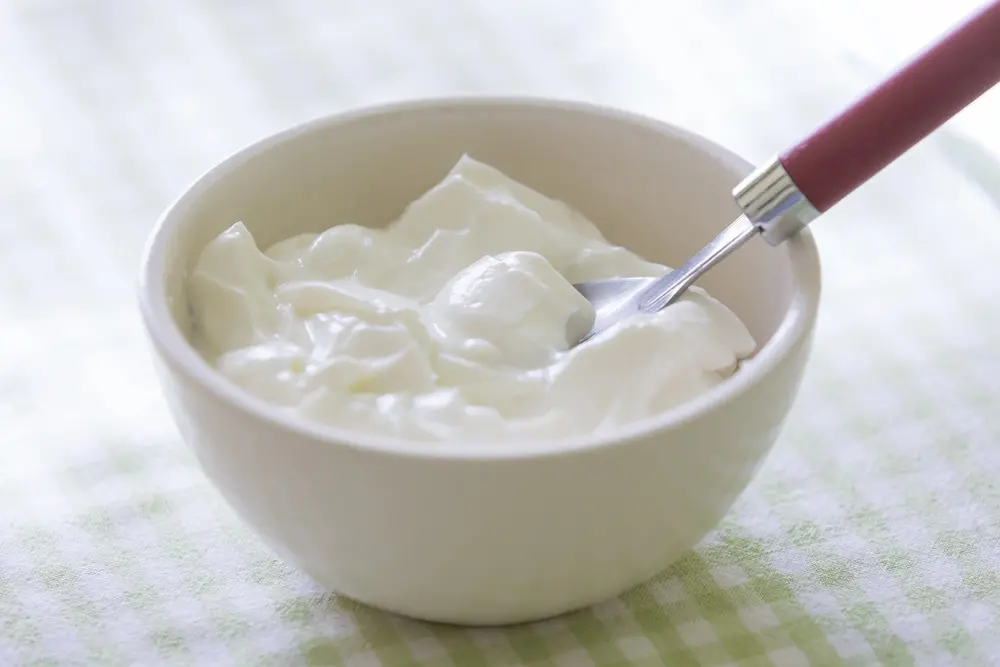
Turkish Yogurt
Yogurt ‘is a Turkish word and is used as Turkish yogurt all over the world as it is used in Turkish. It came with Turks from Central Asia to Anatolia. It is made from milk. Yoghurt is very useful for both food and health. It is the indispensable traditional of Turkish culture. It can also be eaten plain or mixed with other dishes. You can find it in Turkish restaurants all over the world.
Turkish Raki
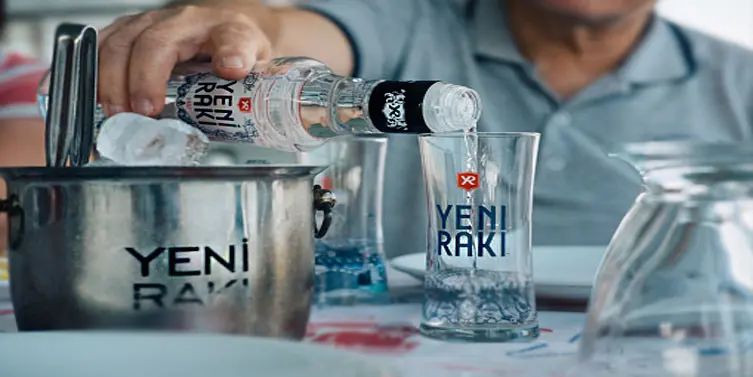
Turkish Raki
It is accepted by almost all countries of the world that Raki is produced in Anatolia for the first time. It is stated in almost all encyclopedias that Raki is a Turkish drink. Raki is a national drink enjoyed by those living in Anatolia. The First Raki is an aniseed drink made from Razaki grapes. Today it is sold all over the world as Turkish Raki (Turkish Rakı). Today, Turkey is the first in the production of Raki.
Turkish Wine
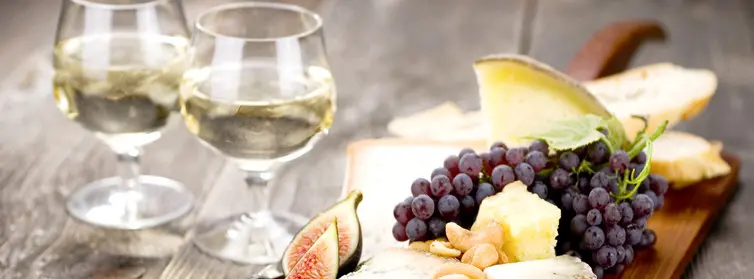
Turkish Wine
Historians point to the homeland of wine in Central Anatolia and 3 thousand BC in history. They discovered the properties of the grapes of the Hittites living in Central Anatolia and made the first wine. It is seen that the wine is called “Vino” in Hittite language and the name of the wine is Vino origin in all Latin languages. Today, it is the 5th largest producer in the world, the quality and value superiority of Turkish wines in international markets. grown in Turkey “slightest”, “marbles,” “Emir” and “for Seminyo” type of white wine grapes; Grapes such as “Pastor Karası”, “Kalecik Karası”, “Öküz Gözü” and “Bogazkere” are considered as very good quality for red wine. We advise you to experiment as much as possible to Turkey.
Turkish Hazelnut
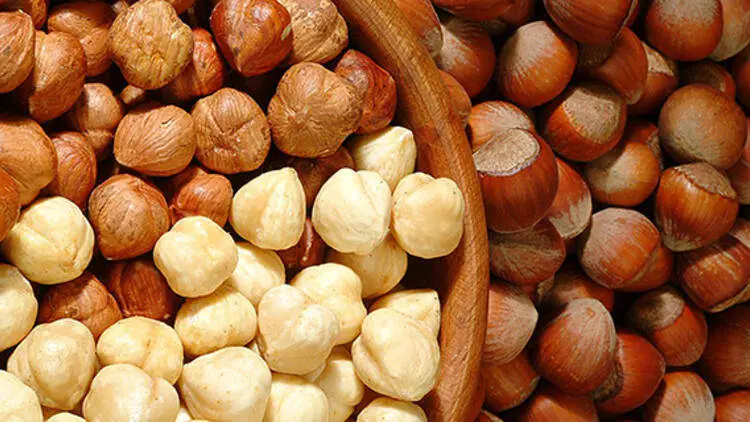
Turkish Hazelnut
Hazelnut has a history that goes back to very old dates. In Turkish sources, hazelnut tree is frequently mentioned. Everyone produces hazelnuts on the black sea coasts in Anatolia, especially in Giresun and Ordu. Hazelnuts grown here are considered the most delicious nuts in the world. According to Chinese written sources, it is one of the five sacred fruits that God has bestowed upon people. Hazelnut tree is known to be in many countries and even counted as sacred trees. Today 70% of the world’s hazelnuts in Turkey also grows.
Turkish Bath
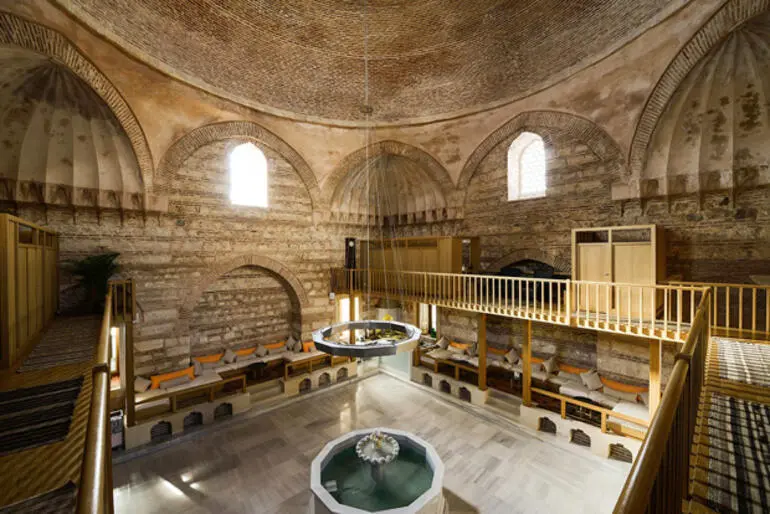
Traditional Turkish Baths
Turkish Baths are the best washing and cleaning places for body cleaning with hot water and soap provided that they do not stay for a long time. Washing the sweating body in the bathhouse by rubbing it with a soft cloth or sponge facilitates blood circulation in the body, giving people comfort. The famous Turkish baths are the best in this regard. Turkish baths, famous for hundreds of years of bath culture, are the best in this regard. There are more than 300 baths in Istanbul alone. Many of these are historical baths. Cagaloglu bath, Cemberlitas bath, Galatasaray bath are the most popular ones. You can easily find these in every city in Turkey bath. We recommend you to experiment.
Turkish Carpet
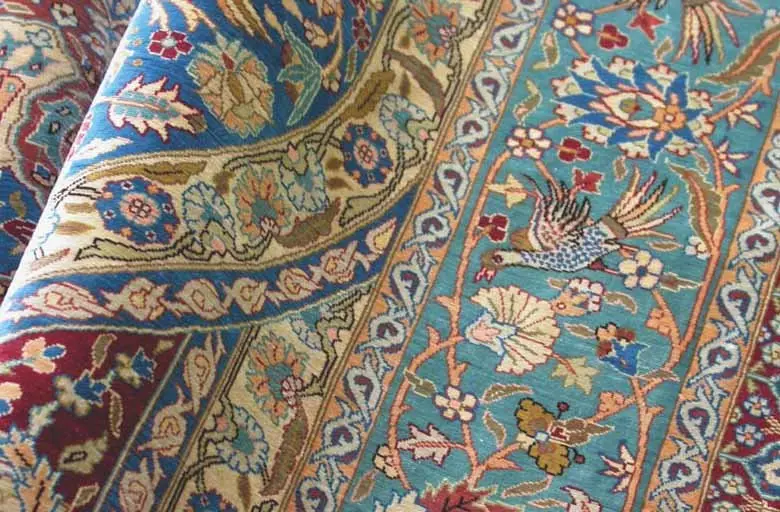
Turkish Carpet
The history of Turkish carpet art goes back to the nomadic origins of Turks based on Central Asia. The carpet had a special place in the life of the nomadic tribes. For people who constantly change places and live a life in tents, the carpet was an object that made it easy to carry and the floor on which it was placed was printable. The carpets, which were used only for these functional features in the early days, were adorned with motifs that adapted to tents and the surrounding environment over time and had decorative features. One of the things that makes Turkish Rugs special is the weaving method unique to Turkish carpets called Gördes knot. As the Gördes knot is a double knot weaving style, it gives the carpet more strength and durability than usual. The carpets produced in Hereke, Konya, Kayseri, Usak and Bergama have been the center of the carpet trade for many centuries. It is exported from Anatolia to Europe and other countries of the world.
The post Traditional Turkish Specialties appeared first on Turkey Travel Info.
Traditional Turkish Baths

Traditional Turkish Baths
Traditional Turkish Baths; Turkish baths are part of traditional Turkish culture. Baths are used as bathing, purification and even healing places in every period. Most of the historical baths in the Ottoman period were built by Mimar Sinan. Baths that are still actively used today continue to keep this culture alive. In traditional Turkish culture, hot springs and baths are important meeting places not only in terms of health, but also in terms of social and cultural activities. This culture, which has not lost its importance until today, continues to serve in historical bathrooms built with architectural aesthetics. Turkish baths We see two different types of baths, natural and heated. The baths, where natural water source is used, are known as hot springs, and healing and drinking water are called İcmece. Baths are also used in daily activities that have a place in social life such as birth, marriage and death.
You will see the most important traditional Turkish baths in Turkey, which we have chosen for you, at the below of the page.
Istanbul Cagaloglu Turkish Bath
Cagaloglu Turkish Bath built in 1741. It is one of the historical baths of Istanbul. It is on Yerebatan Street starting from the Basilica Cistern. Another feature of the bath is the baroque style in its structure. Another feature of Cagaloglu Bath is that it was the last big bath built during the Ottoman period. Cagaloglu bath still attracts international attention as one of the most famous Turkish baths in the world. This bath served many famous names and hosted series and movie shootings. It is a historical place to be seen.
Istanbul Cemberlitas Turkish Bath
Cemberlitas Turkish Bath built in 1584. It is one of the oldest baths in Istanbul. It is one of the most preferred baths for tourists with its location close to the Grand Bazaar. Cemberlitas Bath is planned as a double bath next to each other and adjacent to each other. Women and men section is separate. Entries are made from the same place. The bath attracts attention with its Ottoman inscriptions on some navel stones in the bathing areas.
Istanbul Süleymaniye Turkish Bath
Süleymaniye Turkish Bath built in 1552. It is one of the oldest baths in Istanbul and is a very popular place. The most important feature that distinguishes the Süleymaniye Bath from other baths is that it accepts couples together. There is no distinction between men and women in traditional bath culture in this bath. It is the most preferred bath by foreign couples who want to experience the Turkish bath experience together.
Istanbul Galatasaray Turkish Bath
Galatasaray Turkish Bath built in 1481 by order of Sultan II. Beyazıt. As it is located in Beyoglu district, it attracts the attention of local and foreign tourists. It is the only Turkish bath, which is a touristic facility under the Ministry of Tourism. It is an ideal Turkish bath for those staying near Taksim Square.
Istanbul Kılıç Ali Pasha Turkish Bath
The traditional Turkish bath named after Kılıç Ali Pasha, one of the most powerful names of the Ottoman navy; It has a majestic appearance that was completed in 1583. It is located in Tophane, one of the oldest regions of Istanbul that is compatible with maritime. It is one of the most beautiful buildings built by Captain Kılıç Ali Pasha order to Mimar Sinan. It was built to serve sea soldiers. Kılıç Ali Pasha Bath, which started to host its guests again after a comprehensive restoration lasting 7 years, is a place worth seeing. This bath serves for women in the morning and for men in the afternoon.
Istanbul Hürrem Sultan Turkish Bath
Hürrem Sultan Turkish Bath, which is now called Hagia Sophia, built by Mimar Sinan in the 16th century. The bath was actively used until 1910. This bath; It consists of cold, tepidity and warm sections. After being closed for a long time, it was put into service again in 2012.
Istanbul Aga Turkish Bath
The Aga Turkish Bath is the oldest Turkish bath. Since it built in 1454. It is located in Cihangir district of Beyoglu. It is one of the rare baths where couples can enter together. It is an ideal Turkish bath for those staying near Taksim Square.
Istanbul Mihrimah Sultan Turkish Bath
Two large mosques and complexes were built in Mimar Sinan, in Üsküdar and Edirnekapı, on behalf of Mihrimah Sultan, the daughter of Suleiman the Magnificent, Hürrem Sultan. According to historical sources, it was built by Mimar Sinan in a plan scheme that was common in the classical period in the form of a double bath in 1562-1565. Mihrimah Sultan Turkish Bath has an important place in the culture of Turkish Bath.
Istanbul Kadırga Turkish Bath
Kadırga Turkish Bath is a historical Turkish bath, which is divided into two parts as the men’s section and the women’s section, serving every day of the week between 08.00 am and 21.00 am. This bath takes its name from Kadırga, the district where it is located. In terms of prices, this place is cheaper than other baths.
Istanbul Historical Vezneciler Turkish Bath
Vezneciler Turkish Bath, which provides mixed service to women and men, is in Fatih district. The rooted history of the Vezneciler Bath dates back to 1481. Although this place is mentioned as a double bath; today the building is not true to the original. Among the services you can get from the historical bath, there are also current practices such as sauna or foam massage.
Istanbul Çinili Turkish Bath
It was built in 1640 by order of Kösem Sultan. It is in the district of Uskudar on the Asian side of Istanbul. It takes its name from the special tiles used in its construction. Another factor that makes the Tiled Turkish Bath (Çinili Hamam), which is also used in various art projects, is that its domes are high compared to many baths.
Gedikpasa Turkish Bath
Gedikpasa Turkish Bath was built by Gedik Ahmet Pasha in 1475 by Architect Hayrettin, one of the most famous architects of the Ottoman period. The bath is a double bath consisting of male and female sections. Gedikpasa Bath is one of the important works of Ottoman Architecture in Istanbul. There is also a pool next to the navel in the bath. Located in the city center, 300m away to the Grand Bazaar.
Bursa Kervansaray Turkish Bath
Kervansaray Turkish Bath is a very old bath from the Roman period. Bursa is located inside the Kervansaray Thermal Hotel. The work from the Roman Empire underwent a major restoration in 1389. There are men, women and family departments. It is open every day from 07.00 to 22.30. It is one of the oldest baths outside Istanbul.
Trabzon Eight Directed Turkish Bath
This bath is one of the oldest baths in Turkish history. This bath, built by the Seljuks, has managed to survive until today and is still home to hundreds of people. Its architecture resembles oba tents, unlike baths. This bath, under the large dome placed on long columns, is named after this extraordinary architecture.
Bursa Çekirge Turkish Bath
Bursa, which is also famous for its thermal waters, is one of the best addresses to experience the baths. Çekirge bath in Bursa is one of the oldest baths in the city. This bath, the construction of which was started in 1365, was built as a women’s bath. This historical bath, which has been used continuously for centuries, is a great place to experience the traditional Turkish bath.
Edirne Sokullu Mehmet Pasha Bath
It order from Sokullu Mehmet Pasha to built Mimar Sinan. This is largest Turkish bath in Turkey. It is known for its architectural structure and fine workmanship. It is one of the most important examples of Turkish Art. It has a double bath plan. The entrances of the men and women sections are in separate directions. Especially, the cut stone and brick workmanship on the dressing faces are interesting.
The post Traditional Turkish Baths appeared first on Turkey Travel Info.
Traditional Turkish Specialties
Turkish Culture is more than thousands of years old. It is unique in the world since it interacts from culture and civilizations starting from Central Asia to Europe and North Africa. Turkish culture reflects this unique cultural richness and diversity. Being the cradle of many civilizations for at least twelve thousand years, Anatolia is shaped by its deep roots in the Middle East and the Balkans. Anatolia is a bridge between eastern and western civilizations. Turkish culture also has a history of thousands of years between east and west. For travelers is a important place for visiting. It is also one of the best food and beverage places you can encounter.We researched traditional Turkish specialties known as Turkish and famous with the Turkish name, which the Turkish culture has accumulated for thousands of years, offers the world. You will see them in the rest of the page.
Turkish Delight
Delight history in Anatolia goes back to the 15th century. It lived its most popular times in the 17th century. Travelers took it to Europe and introduced it as ‘Turkish Delight’. Turkish delight has also gained popularity in other countries. Mass production started in 1777 during the Ottoman period. The first delights were produced by mixing with fruit extract and flour. Later, with the invention of starch and refined sugar, it has experienced taste changes until today. Turkish delight, which has many types today, has an important place in traditional Turkish specialties.
Turkish Coffee
Turkish Coffee is the name of the method of preparing and cooking coffee discovered by the Turks. It has a unique identity and tradition with its special taste, foam, smell, cooking and catering. The beverage, which was obtained by boiling the fruit of the coffee in the Arabian Peninsula, brought the coffee, which was admired by the Yemen Governor Özdemir Pasha, to Istanbul in 1517. With this brand new method of preparation and cooking by the Turks in Istanbul, it has gained real coffee flavor and unique aroma. Europe meets with coffee thanks to Turks; For many years, he prepared and consumed coffee as Turkish coffee with this method. In a short time, the taste and reputation of Turkish Coffee surrounded Europe and then the whole world, thanks to both merchants and travelers who traveled to Istanbul and Ottoman ambassadors. In Turkish culture, a coffee has 40 years of sake.
Turkish Tea
Drinking tea every meal of the day in Turkey and are consumed without any additional forms that can change the acidity of the food, especially into. Turkey, most tea consuming country in the world, 7 kg with an average annual per capita tea consumption. The Black Sea has an irrepressible flavor especially in the tea grown in Rize. Turkey is the most massive amounts of tea production in the world is among the first six countries. Turkish tea is a daily indispensable drink of Turkish culture. Turks always offer their guests tea. Turkish tea has an important place in traditional Turkish specialties.
Turkish Doner Kebab
Doner has come to this day from the Turks by putting meat on his swords. The Ottoman period was mentioned in the 18th century before it took its current state of modernity. Lamb is used in a majority of the returns made in Turkey. In addition, chicken meat is often used. It is a very delicious food. As it is cooked very quickly, it is found all over the world as fast food. It is served in different ways. Wrap is served in bread, pita bread or lavash. Doner kebab with yogurt is known as iskender kebab. You can find in every corner of Turkey. It is one of the most lively favorites of Turkish culture.Turkish döner kebab has an important place in traditional Turkish specialties.
Turkish Baklava
The history of Turkish baklava extends from central Asia to Anatolia. Baklava is one of the most favorite desserts in the Ottoman palace. Today’s you can find anywhere in the world. Best baklava are made in Turkey’s Gaziantep province. It is preferred as pistachio or walnut. Baklava is one of the most lovely favorites of Turkish culture.
Turkish Shish Kebab
The meaning of shish kebab comes from the Turkish words which literally means “shish” and “roast meat” and this is a Turkish dish. Kebabs are a natural solution for nomadic tribes. Unusual meats were marinated not only to soften, but also to get rid of the flavor.
Turkish Lahmacun
Lahmacun is an oriental dish and has a history of approximately 5000 years. Lahmacun is called Turkish Pizza in some places. After the 1960s, it spread from the eastern regions of our country to the whole country and managed to attract great attention. The most delicious version of the Lahmacun is cooked in a stone oven, but in some places it is cooked in sheet metal. The lahmacun cooked in the stone oven can last for 2 days and during these 2 days it will never dry out. It is one of the best tastes of Turkish culture to the world.
Turkish Pita
Pita is a kind of bread with a wide variety of types. It is one of the indispensable flavors of Turkish cuisine. It is a kind of bread that does not swell much, has a flat appearance and is baked both on the sheet and in the tandoor. In Ramadan, special Ramadan pita is removed. Even with different pronunciations such as pitta, pita, pida, it is loved and consumed in a wide geography extending from Central Asia to Europe. It is known as Turkish pita all over the world.
Turkish Meatballs
Many inscriptions whose origins are considered as Central Asia refer to a food called ‘Kueffettue’ which means ‘kneaded meat’. On the journey of Turks from Central Asia to Europe, they taught the peoples with whom they had communication in the meatballs. Today, there are 250 different types of meatballs in Anatolia. You can find some of these delicious meatballs in Turkish restaurants in various parts of the world. One of the best examples of Turkish Meatballs is Sultanahmet Meatballs. We recommend.
Turkish Bagel
Turkish bagel has a 600-year history. It is a traditional Turkish food. It is made of bagels, flour, yeast, molasses and sesame that you cannot see in other countries. Because it is satisfying and it is cheap, it is cooked in public ovens everywhere and street sellers are offered for sale in every corner of the cities. It is especially the choice of young people and students. We recommend it with Turkish Tea.
Turkish Bath
Turkish Baths are the best washing and cleaning places for body cleaning with hot water and soap provided that they do not stay for a long time. Washing the sweating body in the bathhouse by rubbing it with a soft cloth or sponge facilitates blood circulation in the body, giving people comfort. The famous Turkish baths are the best in this regard. Turkish baths, famous for hundreds of years of bath culture, are the best in this regard. There are more than 300 baths in Istanbul alone. Many of these are historical baths. Cagaloglu bath, Cemberlitas bath, Galatasaray bath are the most popular ones. You can easily find these in every city in Turkey bath. We recommend you to experiment. Turkish bath has an important place in traditional Turkish specialties.
Turkish Yogurt
Yogurt is a Turkish word and is used as Turkish yogurt all over the world as it is used in Turkish. It came with Turks from Central Asia to Anatolia. It is made from milk. Yoghurt is very useful for both food and health. It is the indispensable traditional of Turkish culture. It can also be eaten plain or mixed with other dishes. You can find it in Turkish restaurants all over the world.
Turkish Carpet
The history of Turkish carpet art goes back to the nomadic origins of Turks based on Central Asia. The carpet had a special place in the life of the nomadic tribes. For people who constantly change places and live a life in tents, the carpet was an object that made it easy to carry and the floor on which it was placed was printable. The carpets, which were used only for these functional features in the early days, were adorned with motifs that adapted to tents and the surrounding environment over time and had decorative features. One of the things that makes Turkish Rugs special is the weaving method unique to Turkish carpets called Gördes knot. As the Gördes knot is a double knot weaving style, it gives the carpet more strength and durability than usual. The carpets produced in Hereke, Konya, Kayseri, Usak and Bergama have been the center of the carpet trade for many centuries. It is exported from Anatolia to Europe and other countries of the world.
Turkish Raki
It is accepted by almost all countries of the world that Raki is produced in Anatolia for the first time. It is stated in almost all encyclopedias that Raki is a Turkish drink. Raki is a national drink enjoyed by those living in Anatolia. The First Raki is an aniseed drink made from Razaki grapes. Today it is sold all over the world as Turkish Raki (Turkish Rakı). Today, Turkey is the first in the production of Raki. Turkish Raki has an important place in traditional Turkish specialties.
Turkish Wine
Historians point to the homeland of wine in Central Anatolia and 3 thousand BC in history. They discovered the properties of the grapes of the Hittite living in Central Anatolia and made the first wine. It is seen that the wine is called “Vino” in Hittite language and the name of the wine is Vino origin in all Latin languages. Today, it is the 5th largest producer in the world, the quality and value superiority of Turkish wines in international markets. Grown in Turkey “slightest”, “marbles,” “Emir” and “for Seminyo” type of white wine grapes; Grapes such as “Kalecik Karası”, “Dimrit Karası”, “Öküz Gözü” and “Bogazkere” are considered as very good quality for red wine. We advise you to experiment as much as possible to Turkey.
Turkish Hazelnut
Hazelnut has a history that goes back to very old dates. In Turkish sources, hazelnut tree is frequently mentioned. Everyone produces hazelnuts on the black sea coasts in Anatolia, especially in Giresun and Ordu. Hazelnuts grown here are considered the most delicious nuts in the world. According to Chinese written sources, it is one of the five sacred fruits that God has bestowed upon people. Hazelnut tree is known to be in many countries and even counted as sacred trees. Today 70% of the world’s hazelnuts in Turkey also grows.
The post Traditional Turkish Specialties appeared first on Turkey Travel Info
Traditional Turkish Baths

Traditional Turkish Baths
Traditional Turkish Baths
Traditional Turkish Baths; Turkish baths are part of traditional Turkish culture. Baths are used as bathing, purification and even healing places in every period. Most of the historical baths in the Ottoman period were built by Mimar Sinan. Baths that are still actively used today continue to keep this culture alive. In traditional Turkish culture, hot springs and baths are important meeting places not only in terms of health, but also in terms of social and cultural activities. This culture, which has not lost its importance until today, continues to serve in historical bathrooms built with architectural aesthetics. Turkish baths We see two different types of baths, natural and heated. The baths, where natural water source is used, are known as hot springs, and healing and drinking water are called İcmece. Baths are also used in daily activities that have a place in social life such as birth, marriage and death.
You will see the most important traditional Turkish baths in Turkey, which we have chosen for you, at the below of the page.
Istanbul Cagaloglu Turkish Bath
Cagaloglu Turkish Bath built in 1741. It is one of the historical baths of Istanbul. It is on Yerebatan Street starting from the Basilica Cistern. Another feature of the bath is the baroque style in its structure. Another feature of Cagaloglu Bath is that it was the last big bath built during the Ottoman period. Cagaloglu bath still attracts international attention as one of the most famous Turkish baths in the world. This bath served many famous names and hosted series and movie shootings. It is a historical place to be seen.
Istanbul Cemberlitas Turkish Bath
Cemberlitas Turkish Bath built in 1584. It is one of the oldest baths in Istanbul. It is one of the most preferred baths for tourists with its location close to the Grand Bazaar. Cemberlitas Bath is planned as a double bath next to each other and adjacent to each other. Women and men section is separate. Entries are made from the same place. The bath attracts attention with its Ottoman inscriptions on some navel stones in the bathing areas.
Istanbul Süleymaniye Turkish Bath
Süleymaniye Turkish Bath built in 1552. It is one of the oldest baths in Istanbul and is a very popular place. The most important feature that distinguishes the Süleymaniye Bath from other baths is that it accepts couples together. There is no distinction between men and women in traditional bath culture in this bath. It is the most preferred bath by foreign couples who want to experience the Turkish bath experience together.
Istanbul Galatasaray Turkish Bath
Galatasaray Turkish Bath built in 1481 by order of Sultan II. Beyazıt. As it is located in Beyoglu district, it attracts the attention of local and foreign tourists. It is the only Turkish bath, which is a touristic facility under the Ministry of Tourism. It is an ideal Turkish bath for those staying near Taksim Square.
Istanbul Kılıç Ali Pasha Turkish Bath
The traditional Turkish bath named after Kılıç Ali Pasha, one of the most powerful names of the Ottoman navy; It has a majestic appearance that was completed in 1583. It is located in Tophane, one of the oldest regions of Istanbul that is compatible with maritime. It is one of the most beautiful buildings built by Captain Kılıç Ali Pasha order to Mimar Sinan. It was built to serve sea soldiers. Kılıç Ali Pasha Bath, which started to host its guests again after a comprehensive restoration lasting 7 years, is a place worth seeing. This bath serves for women in the morning and for men in the afternoon.
Istanbul Hürrem Sultan Turkish Bath
Hürrem Sultan Turkish Bath, which is now called Hagia Sophia, built by Mimar Sinan in the 16th century. The bath was actively used until 1910. This bath; It consists of cold, tepidity and warm sections. After being closed for a long time, it was put into service again in 2012.
Istanbul Aga Turkish Bath
The Aga Turkish Bath is the oldest Turkish bath. Since it built in 1454. It is located in Cihangir district of Beyoglu. It is one of the rare baths where couples can enter together. It is an ideal Turkish bath for those staying near Taksim Square.
Istanbul Mihrimah Sultan Turkish Bath
Two large mosques and complexes were built in Mimar Sinan, in Üsküdar and Edirnekapı, on behalf of Mihrimah Sultan, the daughter of Suleiman the Magnificent, Hürrem Sultan. According to historical sources, it was built by Mimar Sinan in a plan scheme that was common in the classical period in the form of a double bath in 1562-1565. Mihrimah Sultan Turkish Bath has an important place in the culture of Turkish Bath.
Istanbul Kadırga Turkish Bath
Kadırga Turkish Bath is a historical Turkish bath, which is divided into two parts as the men’s section and the women’s section, serving every day of the week between 08.00 am and 21.00 am. This bath takes its name from Kadırga, the district where it is located. In terms of prices, this place is cheaper than other baths.
Istanbul Historical Vezneciler Turkish Bath
Vezneciler Turkish Bath, which provides mixed service to women and men, is in Fatih district. The rooted history of the Vezneciler Bath dates back to 1481. Although this place is mentioned as a double bath; today the building is not true to the original. Among the services you can get from the historical bath, there are also current practices such as sauna or foam massage.
Istanbul Çinili Turkish Bath
It was built in 1640 by order of Kösem Sultan. It is in the district of Uskudar on the Asian side of Istanbul. It takes its name from the special tiles used in its construction. Another factor that makes the Tiled Turkish Bath (Çinili Hamam), which is also used in various art projects, is that its domes are high compared to many baths.
Gedikpasa Turkish Bath
Gedikpasa Turkish Bath was built by Gedik Ahmet Pasha in 1475 by Architect Hayrettin, one of the most famous architects of the Ottoman period. The bath is a double bath consisting of male and female sections. Gedikpasa Bath is one of the important works of Ottoman Architecture in Istanbul. There is also a pool next to the navel in the bath. Located in the city center, 300m away to the Grand Bazaar.
Bursa Kervansaray Turkish Bath
Kervansaray Turkish Bath is a very old bath from the Roman period. Bursa is located inside the Kervansaray Thermal Hotel. The work from the Roman Empire underwent a major restoration in 1389. There are men, women and family departments. It is open every day from 07.00 to 22.30. It is one of the oldest baths outside Istanbul.
Trabzon Eight Directed Turkish Bath
This bath is one of the oldest baths in Turkish history. This bath, built by the Seljuks, has managed to survive until today and is still home to hundreds of people. Its architecture resembles oba tents, unlike baths. This bath, under the large dome placed on long columns, is named after this extraordinary architecture.
Bursa Çekirge Turkish Bath
Bursa, which is also famous for its thermal waters, is one of the best addresses to experience the baths. Çekirge bath in Bursa is one of the oldest baths in the city. This bath, the construction of which was started in 1365, was built as a women’s bath. This historical bath, which has been used continuously for centuries, is a great place to experience the traditional Turkish bath.
Edirne Sokullu Mehmet Pasha Bath
It order from Sokullu Mehmet Pasha to built Mimar Sinan. This is largest Turkish bath in Turkey. It is known for its architectural structure and fine workmanship. It is one of the most important examples of Turkish Art. It has a double bath plan. The entrances of the men and women sections are in separate directions. Especially, the cut stone and brick workmanship on the dressing faces are interesting.
The post Traditional Turkish Baths appeared first on Turkey Travel Info.
Best of Turkey in 10 Days

Best of Turkey in 10 Days
Best of Turkey in 10 Days
If you plan to vacation in Turkey and you can see where in 10 days, let us help you. Best of Turkey in 10 days, as you’ve done the program. According to this program, starting from Istanbul, we return to Istanbul after visiting Cappadocia, Fethiye, and Pamukkale. 3 days in Istanbul, 2 days in Cappadocia, 3 days in Fethiye, 1 day in Pamukkale and 1 day in Ephesus, 10 days in total Turkey Tour. We have created a beautiful holiday program by combining historical cultural places, seas and beaches. We hope it has been a program just for you. If you contact us, we can offer different options.
DAY 1: ISTANBUL
Visiting: Istanbul Classics. This tour covers the most famous historic monuments and sights in Old City area. These are; 1500 year old Hagia Sophia Museum which is accepted as a World Heritage Site by UNESCO. Sultanahmet Blue Mosque with its famous blue tiles, Hippodrome area where the Byzantium era chariot races were held, Topkapı Palace is one of the biggest and most popular symbol places to visit in Istanbul and world’s oldest indoor market; Grand Bazaar is the world’s largest indoor bazaar with more than 60 streets, 4,000 shops and 18 doors. Although it is over 550 years old, it still operates very actively.
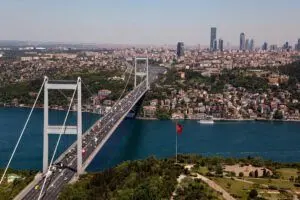
Istanbul
DAY 2: ISTANBUL
Visiting: Bosphorus Cruise along the Bosphorus Strait by boat. Bosphorus is one of the most beautiful location in the world. It is in a very important location due to being between Europe and Asia. Also, you will visit Spice Bazaar, the last residence of Ottoman Empires, Dolmabahce Palace is under the influence of the West and is built to model European palaces. You will also cross the Bosphorus Bridge and at Camlica Hill to see the two side of Istanbul.
DAY 3: CAPPADOCIA
Visiting: Devrent imagination valley (a lunar landscape), Pasabaglari (Fairy chimneys), Avanos (pottery demonstration with the Hittite tecnique), Uchisar rock-castle, Esentepe (panoramic view of Göreme valley) and Göreme open air museum (rock cut churches, frescos, monastery). Göreme Open Air Museum is a place where you will enter a completely different world. In this different world where the missionary and seclusion of Christians escaped from oppression and where the monastic life started.
DAY 4: CAPPADOCIA
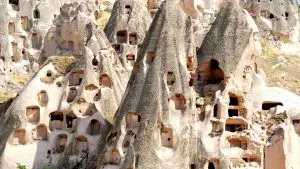
Cappadocia
Visiting: Early morning Cappadocia hot air balloon, after balloon visiting Kaymaklı Underground City have constructed their houses around nearly one hundred tunnels of the underground city, Red&Rose Valley (4 km treking in valley ), Belisırma Village, Selime (Panoramic view point) and Nar Lake is a volcanic crater lake. A volcanic crater lake is a lake in a crater that was formed from explosive activity or collapse during a volcanic eruption. Its surface lies 70 metres below the surface of the plain and the depth of the lake is not known.
DAY 5: FETHIYE
Visiting: Fethiye Saklıkent Gorge and Tlos. Saklıkent is located near Tauros mountains, between Fethiye and Kas for million of years. Located east of Esencay, Saklıkent has been explored recently. High up in the hills that surround Fethiye, Tlos is a Lycian city ruin. Crowning the rounded acropolis hill are the remnants of an Ottoman fortress.
DAY 6: FETHIYE
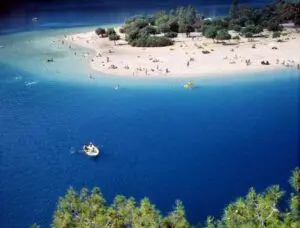
Fethiye
Visiting: Fethiye 12 Islands by boat. Enjoy the romantic bays of the Mediterranean, where you can swim in the crystal blue water. Dockyard Island, Flat Island, Red Island, Göcek Island and Aquarium bay. Its suggested to look around carefully during the tour because you might have the chance to see the dolphins, and even the sea turtles! Flat Island is famous for the clear, dark blue and very shallow waters.
DAY 7: FETHIYE
Visiting: Fethiye Butterfly Valley Boat cruise leaving from Fethiye Oludeniz Beach. Swim in the Blue Cave before stepping at Butterfly Valley. Swimming at ‘Cold Spring Bay’ where fresh water leaks into the sea, is full of refreshing.
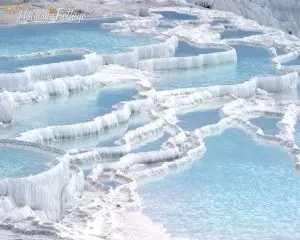
Pamukkale
DAY 8: PAMUKKALE
Visiting: Pamukkale and Hierapolis. Domitian Gate, Colonnaded Gateway, Cathedral, Red waters of Karahayit, Pamukkale Museum, The Travertines of Pamukkale. The sacred Hierapolis of Phrygia, one of the antique cities of the Aegean, was placed on the UNESCO World Heritage List in 1988. The foundations of Hierapolis were laid during the Phrygian Era because of the sacred site of Cybele in which the cave under the Temple of Apollo was located.
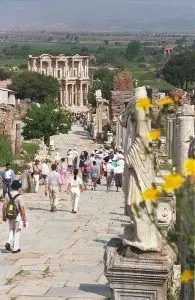
Ephesus
DAY 9: EPHESUS
Visiting: Ephesus, one of the world’s finest examples of an ancient classical city; Temple of Artemis (Diana), the site of one of the seven wonders of the ancient world; House of Virgin Mary, probably where She spent recent years of Her life; Isa Bey Mosque, this impressive mosque from XIV. Century A.D. Ephesus has been added to UNESCO’s World Heritage List.
DAY 10: ISTANBUL
Visiting: Princes’ Islands, Heybeliada and Büyükada. Take a one hour boat ride to the Princes’ Islands near the Istanbul city center. If you have done the main visites at Istanbul city center and want to have a full extra day out of the city traffic, this is one of the best options to go Princes’ Islands.
Turkey Tour Booking
We will be happy to see you in Turkey. We will be glad to help you for Turkey Package tours with our local expert guide. We can offer different options if you contact us.
The post Best of Turkey in 10 Days appeared first on Turkey Travel Info.
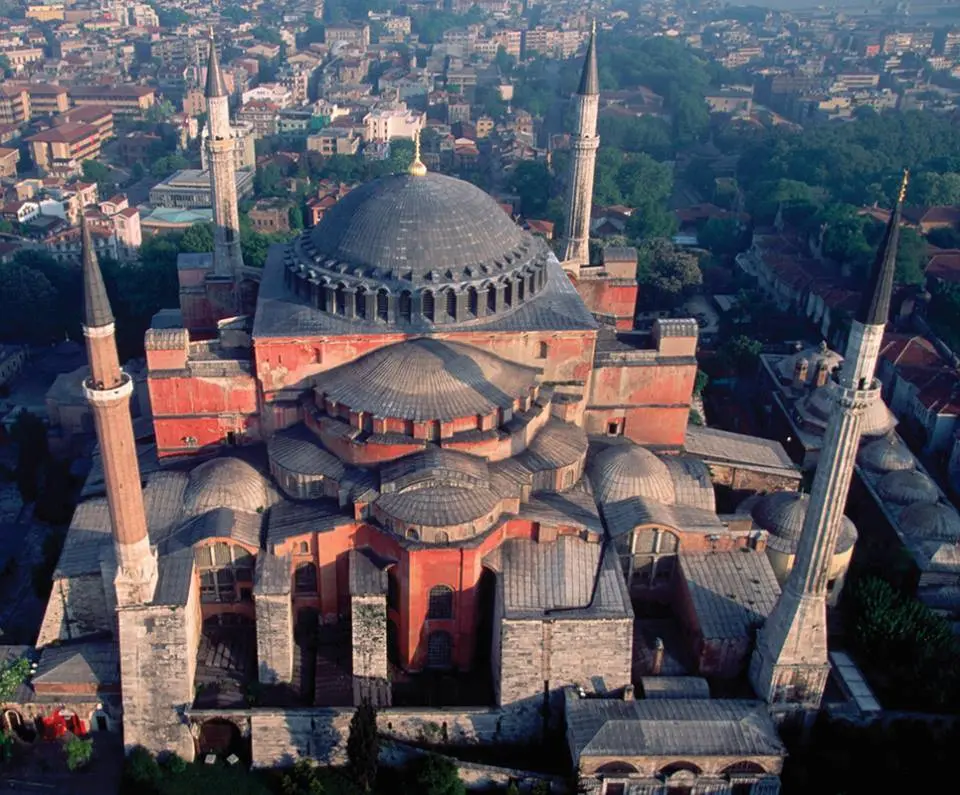
The top 10 sights in Istanbul
The top 10 sights in Istanbul
Istanbul has many historical places. Palaces, mosques, towers, bazaars and more. We found the top 10 sights in Istanbul of these for you. You can find this information in our article below. We hope this information will help you on your Istanbul vacation.
Topkapı Palace
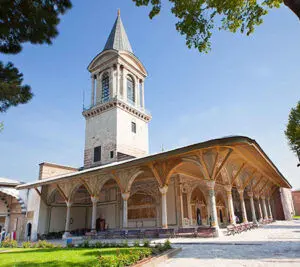
Topkapi Palace
Topkapı Palace is one of the biggest and most popular palace to visit in Istanbul. It is include in the Unesco World Heritage List in 1985. Topkapı Palace on the place known as the historical peninsula in Istanbul old city.
Topkapı Palace has hosted 22 different Sultans and their families and the political center of the Ottoman empire for 400 years. Each sultan added a different section or hall to his palace according to his own need. Topkapı Palace architecture is typical Turkish style palace.
Topkapı Palace was opened to the public as a museum upon the order of Atatürk in 1924. Today, there are many sections that can be visit in Topkapı Palace. In some exhibition halls there are the Treasury, the costumes of the Sultans and the Sacred relics.
Hagia Sophia
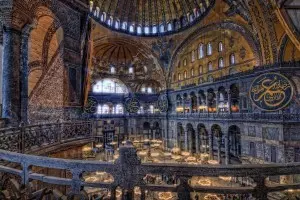
Hagia Sophia
Hagia Sophia means “Holly Wisdom”. This is an Orthodox church cathedral dedicated to holly wisdom. It is a former Byzantine church and former Ottoman mosque. It located in Sultanahmet
neighborhood being one of the most important museums of Istanbul considered as a World Heritage by Unesco. It is one of the greatest surviving examples of Byzantine architecture.
The first church of Hagia Sophia was built on the same site in the 4th century by Constantine the Great and renovated by his son Constantinus II in 360 AD.
Hagia Sophia, one of the historical architectural wonders that still remains standing today, has an important place in the art world with its architecture, grandness, size and functionality.
Following the capture of Constantinople by the Ottoman Turks in On May 29th, 1453, the Ottomans conquered Constantinople and Sultan Mehmet II ordered to convert the church into a mosque. As a mosque, it was considered as one of the holiest Islamic temples of the world.
Under the order of Mustafa Kemal Ataturk and the Council of Ministers the Hagia Sophia opened as a museum in 1935.
Basilica Cistern
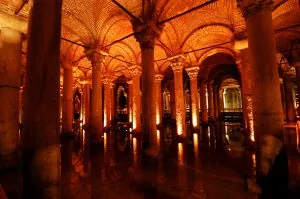
Basilica Cistern
One of the historical buildings of Istanbul is the Basilica Cistern. Built by the Byzantine Emperor Justinianus (527-565), this large underground cistern was named as the “Basilica Palace” among the people because of the marble columns rising from the water. Since there is a Basilica in the place where the cistern was, it is also known as the Basilica Cistern.
The cistern is a giant building covering a rectangular area of 140 meters in length and 70 meters in width. Covering a total area of 9,800 square meters, this cistern has a water storage capacity of approximately 100,000 tons. There are 336 columns, each 9 meters high, in this cistern, which is descended by a 52-step stone staircase. These columns, erected at intervals of 4.80 meters, form 12 rows, each containing 28 columns.
Chora Church
The first Chora Church was built by Justinianus (527-565). Thanks to its proximity to the Blachernae Palace, it served as a court chapel for important religious ceremonies.
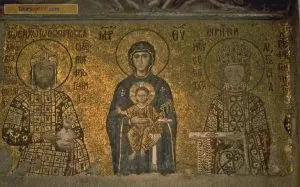
Chora Church
After continuing to serve as a church after the conquest of Istanbul in 1453, it was converted into a mosque in 1511. It was converted into a museum in 1945 and during the restoration carried out by the Byzantine Institute in 1948-1959, mosaics and frescoes were unearthed.
The mosaics and frescoes in Chora are the most beautiful examples from the last period of the Byzantine painting (14th century). The characteristic style elements in these mosaics and frescoes are the elongation of the figures with their depth, movements and plastic values. The Chora church represents Byzantine art at its most experimental. Most of the interior is covered with mosaics depicting the lives of Christ and the Virgin Mary.
Galata Tower
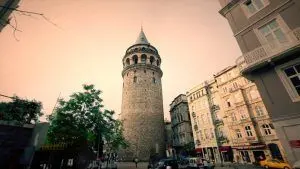
Galata Tower
Galata Tower is one of the oldest and highest towers in Istanbul. It is 63 meters high. You can watch all around Galata tower and Golden Horn.
It was built in the 14th century by the Genoese colony as part of the defensive wall surrounding its regions in Galata. They called the tower “Christea Turris” or “Christ Tower”. Genoese entered the trade with the Byzantines, and the tower was used for the surveillance of the Harbor in Golden Horn. After conquest by Ottoman, it was used as a fire watchtower to detect fires in the city.
Hezarfen Ahmet Celebi the first Turkish to fly in the 17th century Ottoman Empire. The bird copied its wings and examined the air flows of the throat. He flew from the Galata Tower and landed about 6 kilometers (4 miles) from the district of Üsküdar on the Asian continent across the Bosphorus.
On special days and national holidays, light shows are held in the Galata tower. Those who see the tower from the outside watch this visual with interest.
Dolmabahce Palace
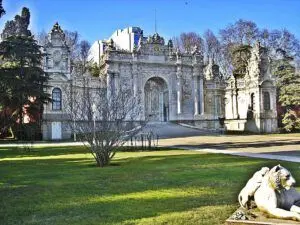
Dolmabahce Palace
Dolmabahce Palace started its construction in 1843, was opened in 1856 after the surrounding walls were completed.
The palace mainly consists of the Imperial State Apartments, the Ceremonial Hall and the Harem. The main building has three floors, basement on the side parallel to the sea, and four floors, on the land side, containing the garret floors and the Harem neighborhoods. Significant Western influences observed in style, details and ornaments are reflections of the changing aesthetic values in the last period of the Empire. It is a building complex where traditional Turkish style is applied in a wide scale in terms of the organization of the space and the relations between the rooms and the halls.
Although the Dolmabahce Palace was under the influence of the West and was built to model European palaces, Harem was built as a separate section, although not as in the past. However, unlike Topkapı Palace, Harem is no longer a separate building or complex of the Palace; however, it is a special living unit located under the same roof within the same building complex. Dolmabahce Palace hosted 6 sultans at intervals and the last Ottoman sultan.
Republic of Turkey founder Mustafa Kemal Ataturk lived here and died here for a while.
Blue Mosque
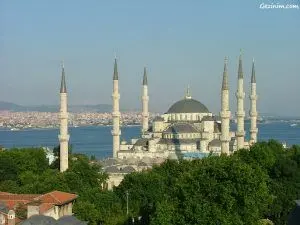
Blue Mosque
Sultan Ahmed Mosque, which is known as the Blue Mosque by many people due to its bluish interior decoration tiles. It is one of the most important mosques in Istanbul standing next to the Byzantine Hippodrome in the old city center. It was built between 1609-1616 by the Ottoman Sultan Ahmed I. Its architect Sedefkar Mehmet Aga was the student of the greatest architect Mimar Sinan.
Like all the major and important mosques of that time, the Sultan Ahmed Mosque was built as a complex like a theology school, an imperial mansion, a kitchen for the poor, arcade shops and a small library to raise money for maintenance. It is the only mosque in Istanbul with 6 minarets. Four of them have three balconies each, and two have two balconies, each with a total of 16 spiral staircases.
There are 3 entrances to the mosque. After entering inside, the flower and geometric interior decoration and beauty of 21 thousand Iznik tiles, about 260 windows with stained glass and calligraphy of the Quranic verses appear. The 34-meter-high central dome is surrounded by smaller domes and semi-domes to disperse the heavy weight of the main dome, and they are all supported by 4 large columns.
Hippodrome
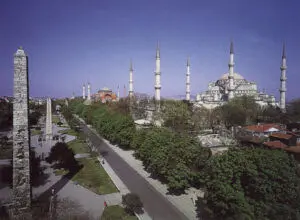
Hippodrome
The Hippodrome, known as the Atmeydanı (horse arena) during the Ottoman era, served as an athletic ground in Byzantine times. It was also used for horse and carriage races, always for the honour of the Emperor. Sultan I. Ahmet (1609-1616) had the mosque built in his name, this historical ground was named after him Sultanahmet. Hippodrome was the center of life in Byzantium and Ottoman. During the Byzantine era, it was an arena where the chariot teams competed.
It was not an arena where gladiators fought like in Rome. It was mostly used for entertaining show. In the Hippodrome square there is Obelisk, serpentine Column, German fountain, Ibrahim pasha palace. It is one of, the top 10 sights in Istanbul.
Grand Bazaar
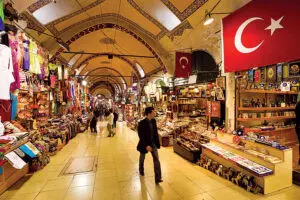
Grand Bazaar
It opens at 09:00 am in the morning and closes at 19:00 pm in the evening. It is the world’s largest indoor bazaar with more than 60 streets, 4,000 shops and 18 doors. Although it is over 550 years old, it still operates very actively. It is crowded always.
When you go inside bazaar, you will feel an authentic oriental atmosphere. All streets are similar eachother but all have different shops.
There are many small shops where you can find all kinds of souvenirs, leather clothing, rugs and carpets, antiques, gold, silver, jewelry, crafts, spices and Turkish delight.
Guests from all over the world travelers come here for shopping. Turkish people going to the Grand Bazaar for gold shopping. There are small streets and small shops outside around the Grand Bazaar. Here trade is made to handicrafts. It is one of, the top 10 sights in Istanbul.
Spice Bazaar
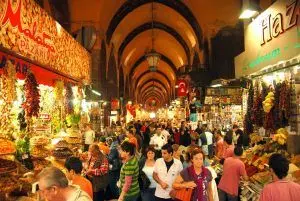
Spice Bazaar
The Spice Bazaar (Egyptian Market) is built between 1597 and 1664, it is also the second oldest covered bazaar in Istanbul. The bazaar is constructed as part of the New Mosque, with rent from the shops supporting the upkeep of the mosque as well as its charitable activities, which included a school, hamam and hospital.
It has been a shopping mall of the Istanbul people with its 400 years old history. This bazaar is one of the most vibrant spots of Istanbul for centuries.
The interior and surroundings of the Spice bazaar has been a region where many people shop. When you enter the Spice bazaar, you feel that old historical smell. Here you can find exotic flavors and a wide variety of spices. It contains a wide variety of shops such as fruits, vegetables, nuts, Turkish delight, gold, silver, flowers, honey, cheese, olives, olive oil and textiles.
The post The top 10 sights in Istanbul appeared first on Turkey Travel Info.
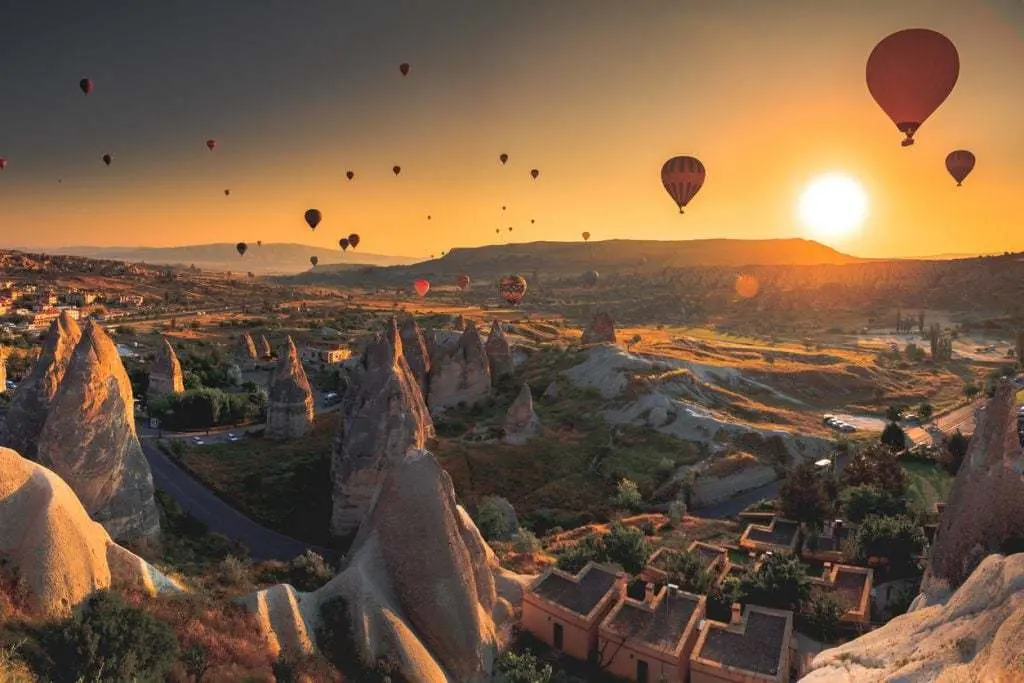
Unique Features of Cappadocia
Unique Features of Cappadocia
Cappadocia; This region of Turkey has the most incredible natural beauty and history. It is very rich in history and really surprising its development. Knowing that the earliest time in history dates back to the 6th century BC. The underground cities and rock formations, fairy chimneys unique features of Cappadocia.
When you look at the map of Turkey, you will see Cappadocia is somewhere in the middle of the Turkey.
There are five Turkish provinces with in the Cappadocia region. Nevsehir province is in the center. Kayseri province is in the east of Cappadocia. Kirsehir province in the north of Cappadocia. Nigde province in the south of Cappadocia. Aksaray province in the west of Cappadocia.
When you go to Cappadocia, the most central places are Göreme and Ürgüp. The other important places are Cavusin, Ortahisar, Uchisar and Avanos.
Cappadocia Tours
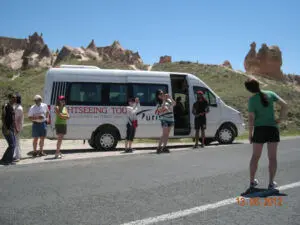
Cappadocia tours
Those who come to visit Cappadocia usually stay for a day or two. Staying longer will help you get to know the area for 3 or 4 days. We recommend you to stay for a long time to discover the fascinating beauty of Cappadocia.
If you stay short, you should definitely take part in local expert guided tours. Those who stay for a day or two in Cappadocia, which is a very large region, will have information about the region with local expert guided tours. For those who stay for a long time, we recommend you to join guided tours first, then you can travel on your own with the information provided by your guide. Lets go to tour with local expert guide for unique features of Cappadocia.
Cappadocia Valleys
Göreme valley, Göreme valley and Göreme open air museum is a place where you will enter a completely different world. In this different world where the missionary and seclusion of Christians escaped from oppression and where the monastic life started, you will meet many churches, chapels and living areas carved into the rocks.
Pigeon valley is starting from Uchisar and extending to Göreme and covering an area of 4 km, Pigeon Valley has taken its name from the pigeon nests carved into the rocks.
Love valley, the most important feature of Love Valley and the fairy chimneys that make this place amazing. Fairy chimneys with hats in different sizes and colors will make you in love.
Zelve valley is one of the largest open-air museums in Cappadocia. You will see the most pointed and wide body fairy chimneys here.
Pasabagi valley is one of the valleys where you can watch interesting formations of the fairy chimneys.
Devrent valley is known as Dream Valley and Haunted Valley. There are fairy chimneys in the form of the famous camel and different silhouettes, which you will sometimes liken to an animal and sometimes to a human.
Red & Rose valley is most beautiful intertwining valley in Cappadocia. Here the rolling and rippling rock faces arc out across the country side in a palette of pastel pink, yellow and orange cliffs, formed by volcanic explosion and millennia of wind and water erosion.
Güllüdere valley is the best of the fairy chimneys and the most artistic stance while walking this 4-km valley.
Zemi valley, Sarnic church, Gorkundere church, Sakli church, and El Nazar church are in this valley. You will find rich vegetation in this hidden valley, which is quite suitable for walking.
Cappadocia Canyons
Ihlara Canyon, is the most secret, deepest and most mysterious of Cappadocia’s paradise? The answer will be the Ihlara canyon. The first settlement of the valley began in the 4th century according to estimates. There are 105 historical artifacts in the canyon which extends for 14 kilometers in a canyon at a depth of 120 meters.
Soganlı Canyon, has a large area of 25 km, so there are about 50 churches here but you can visit 15 of. Important churches in the valley are Karabas, Yilanli, Kubbeli and the Church of St. Barbara
Cappadocia Underground Cities
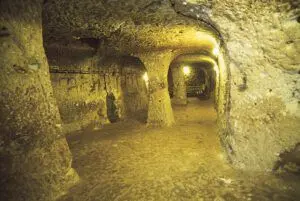
Kaymaklı underground city
Ozkonak Underground City is one of the spoils of the world. Ozkonak Underground City, which is thought to have been carved in 400 years, consists of four floors.
Derinkuyu Underground City is the largest underground city of Cappadocia. It was named because of the deep well in the middle. In this gigantic city, which has 8 floors of space, there are almost as a city inhabitant.
Kaymakli Underground City is built under the hill known as the Citadel of Kaymakli . The people of Kaymakli village have constructed their houses around nearly one hundred tunnels of the underground city.
Cappadocia Monasteries and Churches
Male and Girl Monastery, at the entrance of the Göreme Open Air Museum, there is the monastery, which is called the Girl and Boy Monastery or called the Nuns and Priests Monastery. It is a seven-storey complex with a kitchen, chapel and church. This Monastery is connected to each other by tunnels on the ground floor. Only the first two floors of the monastery are open to visitors.
Keşlik Monastery is locate 2 km after Cemil village, near Damsa Dam, about 10 km away from Ürgüp Mustafapasa village. There are two churches, wineries, kitchens, dining halls, schools, meeting rooms, holy spring, monks and priest houses in the monastery complex. It is thought that the monastery can accommodate 200 people. Cappadocia is one of the places you should definitely see on your trip.
Elmalı Church is consists of nine domes, four columns, closed cross plan and three abscissa structures. Entered the church is through the main entrance at the front and a tunnel from the back side. The decorations of the Apple Church, which is like a work of art due to its architecture and decorations. So, cross and geometric motifs made with red paint on the wall.
Yılanlı Church is a picture on the wall of the church, a man with female breasts. There is green dragon figure on the wall of the church, depicting St. George fighting the dragon, so they said name of the church the serpentine church because of the snake resemblance.
Dark Church has a sheltered solid entrance. And can only be enter this tunnel. It is the best church among the churches in Cappadocia.
St. Catherine’s Chapel is between the Dark Church and Carikli Church. There are eleven tombs in St. Catherine’s Chapel.
Carikli Church the name of church, took it from his footprints beneath the fresco that depicts Jesus’ ascension to heaven. It differs from the crucifixion of Jesus and the stages of his removal from the cross.
Tokali Church is biggest church in the region. Located just outside the Göreme Open Air Museum. This Church has with the fresco of the Virgin Mary, which has the most beautiful you have ever seen.
Cappadocia Activities

Cappadocia horse safari
Cappadocia Walking, after getting to know the area, you will have more information about the area by walking. You get to know local people and local life more closely.
Cappadocia ATV Rental is available for those who have difficulty walking. You can also visit the region with these vehicles.
Cappadocia Horse Safari, you can go on a safari with a horse farm in Göreme and Avanos.
Cappadocia Wine Taste, the most important agricultural product of Cappadocia region is vineyards and winemaking. There is a wine culture dating back to very old times. Exquisite wines are produced from white and red grapes grown here. We strongly recommend you taste it.
Turkish Night Show
Turkish nights are organized to introduce Turkish culture and have fun in Cappadocia. The interest of foreign tourists is great. You can have fun with different dances such as whirling dervish show, oriental dance, traditional Turkish folklore dances in underground rock-carved underground restaurants. You are also affected by the atmosphere of Cappadocia, with the delicious food of the local cuisine and fine wines of quality.
Cappadocia Pottery Kebabs
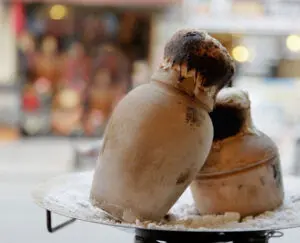
Testi kebabi
The most famous dish of the Cappadocia region is the Pottery kebab (testi kebab). Traditional pottery kebab is prepared by placing meat and ingredients in a pot called pottery produced in Avanos, by cooking them in tandoori. This meal, made in all restaurants in Cappadocia, is presented to the service of the customer with a show. We definitely recommend you to eat this kebab.
Cappadocia Ceramic Workshops
Avanos is a little far from other places. Kızılırmak passes right in the middle of the town. The art of red clay and ceramics, extracted from Kızılırmak, the largest river in Central Anatolia, gained importance here. You will be amazed at the workmanship done in this place where the soil turns into art. There are many local ceramic workshops in Avanos. Lets see and try to make pottery in Avanos and unique features of Cappadocia.
Cappadocia Cave Hotels
There are many beautiful old Cappadocia mansion hotels and Cappadocia rock cave hotels for accommodation in Cappadocia. We recommend that you only stay in these hotels with properties belonging to this region. You will experience the atmosphere you will not find anywhere else.
Cappadocia Tours
Those who come to visit Cappadocia usually stay for a day or two. Staying longer will help you get to know the area for 3 or 4 days. We recommend you to stay for a long time to discover the fascinating beauty of Cappadocia.
If you stay short, you should definitely take part in local expert guided tours. Those who stay for a day or two in Cappadocia, which is a very large region, will have information about the region with local expert guided tours. For those who stay for a long time, we recommend you to join guided tours first, then you can travel on your own with the information provided by your guide. Lets see and visit, unique features of Cappadocia.
Cappadocia Hot Air Balloon Tours
And what we definitely recommend you to do in Cappadocia is a hot air balloon ride. You have watched the sunrise in many places in the world, but watching the sunrise while flying with a hot air balloon is an incredible view. The beautiful view of Cappadocia becomes even more beautiful with the sunrise. Hot air balloon tours in Cappadocia are held in Göreme Valley. This is the best place for Cappadocia hot air balloon flights. Every day, at the earliest hours of the morning, balloons rise at the same moment as the sunrise. Discover the beauty of Cappadocia by hot air balloon tour and unique features of Cappadocia.
Welcome to Cappadocia
We would like to be happy to see you in Cappadocia, and explore all these beauties. We recommend Cappadocia hot air balloon tours to see the Cappadocia from a bird’s eye view.
The post Unique Features of Cappadocia appeared first on Turkey Travel Info.

